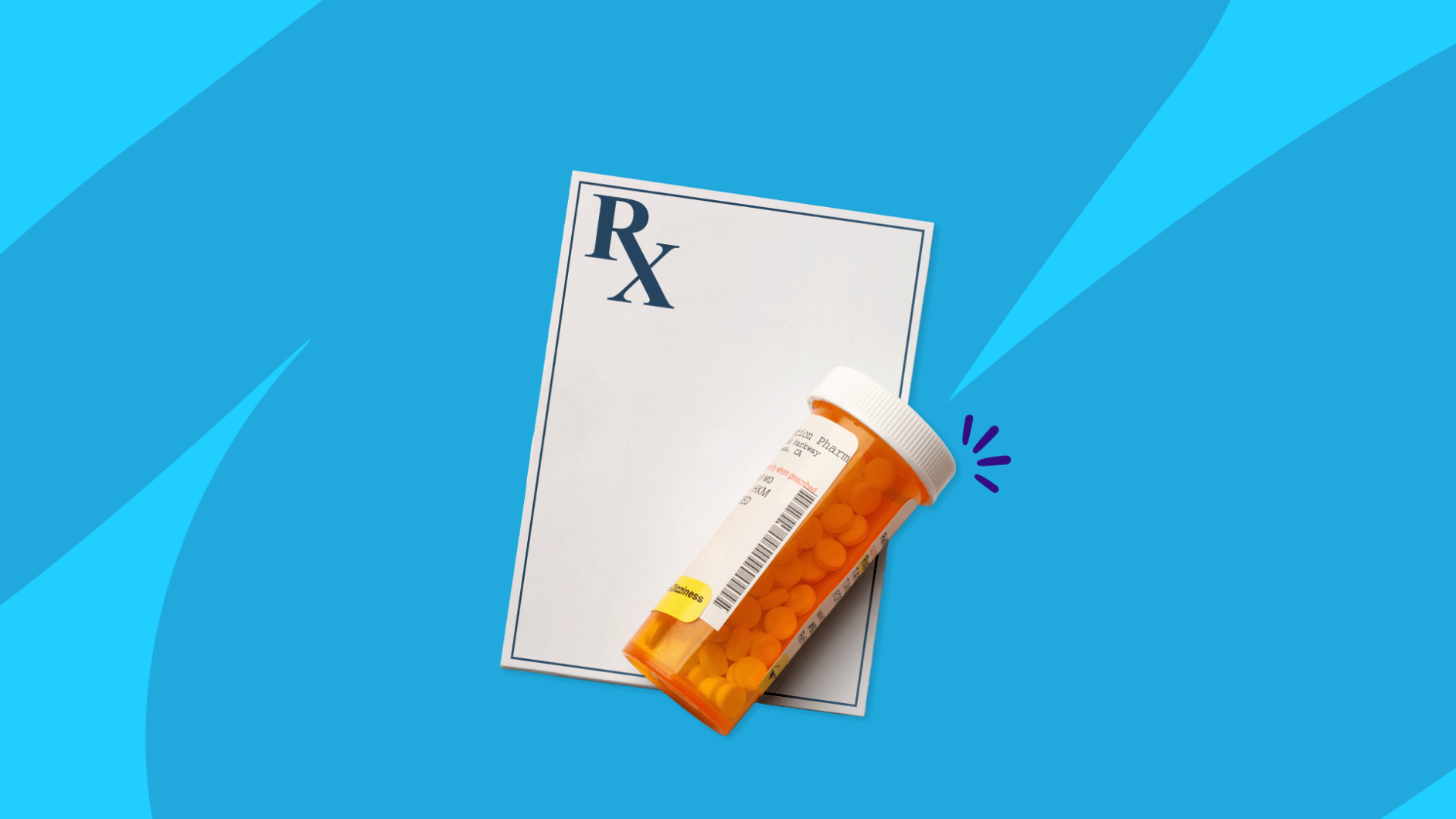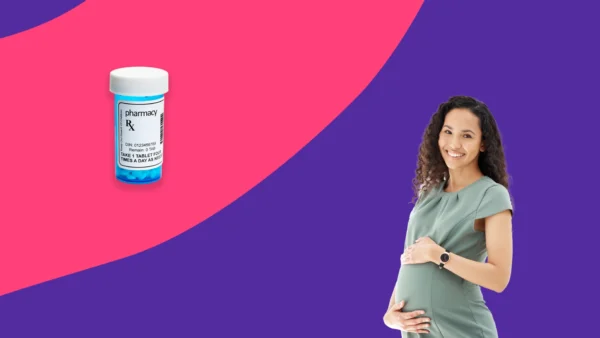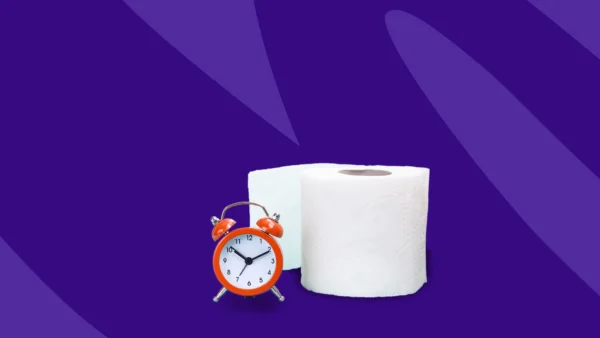Common Ubrelvy side effects | Serious side effects | Nausea | Medication overuse headache | Side effects timeline | Contraindications | Warnings | Interactions | How to avoid side effects | How to treat side effects
Ubrelvy is a brand-name prescription drug taken that relieves migraine headaches.
Ubrelvy, taken at the start of a migraine attack, reduces the pain and some of the symptoms of migraine while shortening the duration of the headache. Ubrogepant, the active ingredient in Ubrelvy, is a calcitonin gene-related peptide (CGRP) receptor antagonist.
Ubrelvy works by blocking the effects of a small, protein-like compound (CGRP) that causes blood vessels to widen quickly at the start of a migraine headache. Rapid blood vessel dilation is responsible for migraine pain, so blocking CGRP helps to end pain and a few other migraine symptoms such as nausea and sensitivity to light. Ubrogepant is a relatively safe drug to take. Common side effects are not commonly experienced, and serious side effects have not yet been recorded. The only significant concern is possible drug interactions, of which there are many. Still, it’s not known if Ubrelvy is safe to take more than eight times in a month. That limits its use for people with frequent migraine attacks.
Related: What is Ubrelvy?
Common side effects of Ubrelvy
The most commonly experienced side effect of Ubrelvy is nausea, but the incidence is low. Only three common side effects were reported in Ubrelvy’s clinical trials, and all three are low incidence. These common side effects are:
- Nausea
- Sleepiness
- Dry mouth
Serious side effects of Ubrelvy
There are no reported serious side effects of Ubrelvy.
Ubrelvy and nausea
Nausea is the most commonly experienced side effect of Ubrelvy. But it’s not commonly experienced. Healthcare professionals understand side effects by comparing the percentage of people who experience a side effect taking a drug versus how many people experience the same problem when they’re taking a “fake” or “nothing” drug called a placebo. The difference gives the number of people who experience a side effect because they’re taking the drug. That’s understood as “risk” for that side effect. In Ubrelvy clinical trials, 2% of people taking a placebo—the “nothing” tablet—reported nausea as a side effect. Two percent of people taking 50 mg of Ubrelvy tablets experienced nausea. That’s the same number, so there’s no significant risk of nausea taking 50 mg Ubrelvy tablets. However, 4% of people taking 100 mg of Ubrelvy experienced nausea as a side effect. In this case, the risk of nausea due to 100 mg Ubrelvy tablets is 1 out of 50, the difference between 4% for Ubrelvy and 2% for the placebo. The good news? None of the common side effects of Ubrelvy have a risk higher than 1 in 50. That’s a surprisingly low number for what are mild side effects, especially when compared to migraine pain. If nausea happens, tell the prescribing healthcare provider. It may or may not be due to Ubrelvy, but there may be treatment options or practical changes that can help.
Ubrelvy and medication overuse headache
Medication overuse headache is not considered a side effect or a risk when taking Ubrelvy. Medication overuse headache, or MOH, is similar to a migraine attack and happens when people overuse common migraine drugs like triptans, ergots, NSAIDs, and combination pain relievers. MOH often escalates episodic headaches into chronic headaches, though this generally reverses when the drugs are stopped. Although Ubrelvy has not been shown to be associated with MOH, it is important not to use Ubrelvy more than eight times in a 30-day period. Medication overuse headaches may be a risk if Ubrelvy is used too often, but healthcare professionals are uncertain.
How soon do Ubrelvy side effects start?
All of Ubrelvy’s side effects can start early in treatment. When a dose is taken, it reaches its peak levels in the body in about 90 minutes—longer if the tablet is taken with food. Side effects, then, could become apparent about an hour or two after a dose is taken.
How long do Ubrelvy side effects last?
Ubrelvy is only intended for the acute treatment of migraines and should not be used to treat more than eight migraines a month. Any side effects should improve at least by the time a dose is cleared from the body. A single dose has a half-life of five to seven hours, so the drug should dwindle to undetectable levels by the next day.
What are the long-term side effects of Ubrelvy?
Ubrelvy is only intended to be used as an acute treatment of migraines. It is not taken in regular doses. If taken as instructed—no more than eight times a month—there are no long-term side effects associated with Ubrelvy.
Ubrelvy contraindications
Ubrelvy is contraindicated in anyone who has a known allergy to the drug or anyone with end-stage kidney disease or on dialysis. Although allergic reactions are not a reported side effect of Ubrelvy, they are considered possible.
Pregnancy
Ubrelvy is prescribed to pregnant women, but there are no studies concerning the possible risks. Animal studies suggest there may be a risk to the unborn baby when taken in very high doses. Women and their healthcare providers will need to discuss the risks and benefits.
Breastfeeding
Ubrelvy is prescribed to women who are breastfeeding, but there’s no certainty about whether Ubrelvy is present in human breast milk or can affect a nursing infant.
Children
The Food and Drug Administration (FDA) had not approved Ubrelvy for use in children or adolescents younger than 18.
Seniors
Although clinical studies suggest that Ubrelvy is as safe for seniors as for younger adults, healthcare professionals are urged to be cautious and prescribe Ubrelvy at low doses to people older than 65.
Ubrelvy warnings
For the most part, Ubrelvy is safe to take for a variety of people and under a variety of circumstances. There are only a few cautions and warnings.
Cautions
Although ubrogepant is broken down by the liver and eliminated by the kidneys, dose adjustments are not required in people with mild to moderate liver or kidney disease. People with severe liver disease, however, will only be able to take 50 mg doses both at the start of a headache and as a second dose if needed. People with severe kidney disease or who are on dialysis should not take Ubrelvy.
Abuse and dependence
Ubrelvy is not habit-forming and does not cause physical dependence or withdrawal symptoms when discontinued.
Overdose
Call a poison control center or get medical attention if too much Ubrelvy is taken. The maximum dose for any 24-hour period is 200 mg, but this could be lower for people with liver problems or who are taking certain drugs. Although most people will take a second dose to handle a migraine attack, some people may not be allowed to take a second dose because of drug interactions. The prescribed dosage should be considered the maximum dosage.
Ubrelvy interactions
Ubrelvy drug interactions are very significant. Several drugs affect how well the body breaks down ubrogepant, the active ingredient in Ubrelvy. In some cases, Ubrelvy can’t be taken with these drugs. In other cases, the dosages may be reduced.
The liver enzymes responsible for breaking down ubrogepant are called CYP3A4, BCRP, and P-gp. Some drugs block these enzymes, so ubrogepant builds up in the bloodstream, increasing the risk of side effects. These drugs are called CYP3A4 inhibitors, BCRP inhibitors, or P-gp inhibitors.
Ubrelvy cannot be used in people taking strong CYP3A4 inhibitors. These drugs include:
- The antibiotics clarithromycin and chloramphenicol
- Some azole antifungal medications such as ketoconazole, itraconazole, posaconazole, and voriconazole
- Some HIV/AIDS drugs called protease inhibitors
- A variety of drugs that inhibit disease processes
- Mifepristone
In people taking moderate CYP3A4 inhibitors, the first dose of Ubrelvy cannot exceed 50 mg and a second dose is not allowed. In people taking weak CYP3A4 inhibitors or any drug that blocks BCRP or P-gp, the first and second doses cannot exceed 50 mg. The list of problem drugs here is fairly long and includes:
- Macrolide antibiotics such as erythromycin or azithromycin
- Fluoroquinolone antibiotics like ciprofloxacin
- All other azole antifungals such as fluconazole
- Blood pressure medications called beta blockers such as carvedilol
- Blood pressure medications called calcium channel blockers such as verapamil
- Some statins such as atorvastatin
- Some NSAIDs such as naproxen
- Some SSRIs such as fluvoxamine
- Some heart rhythm drugs such as quinidine and amiodarone
- HIV/AIDS and hepatitis C drugs
- Some immune suppressants such as tacrolimus or cyclosporine
- Cannabidiols
- Grapefruit or grapefruit juice
Alternatively, some drugs greatly speed up the breakdown of ubrogepant. In those cases, ubrogepant will probably not do any good, so Ubrelvy treatment is usually avoided when these drugs are taken:
- The tuberculosis drug rifampin
- The anti-seizure drug phenytoin
- Barbiturates
- The herbal supplement St. John’s wort
Unfortunately, it’s a long and confusing list of drug interactions, but these drugs do affect whether Ubrelvy can be taken and in what amounts. It’s vitally important to make sure the healthcare provider prescribing Ubrelvy is always aware of when other drugs are started or stopped.
How to avoid Ubrelvy side effects
The good news is that the common side effects of Ubrelvy aren’t that common. The better news? There are ways to make the possible side effects of Ubrelvy even less common.
1. Tell the prescribing healthcare provider about all medical conditions
When getting an Ubrelvy prescription, tell the prescribing healthcare provider about all current medical conditions, especially:
- Liver problems
- Kidney problems
- Pregnancy or plans to get pregnant
- Breastfeeding or plans to breastfeed
2. Tell the prescriber about all drugs being taken
Ubrelvy has some drug interactions that will increase the chances of side effects and affect the dosages that can be used. Because the list of drug interactions is long, make it simple. Just write down a list of all prescription drugs, over-the-counter medications, and dietary supplements being taken. Share this complete list with the prescriber before getting a prescription.
3. Take Ubrelvy as prescribed
Follow all the prescriber’s instructions when taking Ubrelvy. Do not take more than prescribed. There may be special instructions about if or when to take a second dose. In most cases, a second dose can be taken two hours after the first. Other people may be instructed not to take a second dose until 24 hours later. Other people may not be able to take a second dose if the first doesn’t work.
4. Do not treat more than eight migraines in 30 days
Do not take Ubrelvy to treat more than eight migraines in any 30-day period. It is not known if Ubrelvy is safe if taken more than eight times in a month. In particular, it is not known if using too much Ubrelvy may worsen migraines.
5. Try taking the dose with food
To prevent nausea, try taking Ubrelvy with a meal or snack. However, food decreases the rate at which the drug is absorbed, so taking it with food may decrease its effectiveness.
6. Avoid grapefruit and grapefruit juice
Grapefruit or grapefruit juice could increase the chances of experiencing side effects when taking a dose of Ubrelvy. So avoid grapefruit if a dose of Ubrelvy has been taken. Just in case, ask the prescriber if it’s okay to take Ubrelvy if a migraine starts after eating grapefruit or drinking grapefruit juice. It should be, but verify that with the prescribing healthcare provider first.
How to treat side effects of Ubrelvy
Fortunately, most people who use Ubrelvy do not experience side effects. In the unlucky event they are, here are a few tips:
Nausea
Try to drink fluids in small amounts, but don’t drink too much. Get medical advice from the prescribing healthcare provider about possible treatment options.
Sleepiness
If Ubrelvy causes drowsiness, just sit down and rest. Let the drowsiness pass before doing things like driving or operating machinery. If sleepiness starts interfering with daily life, talk to the prescriber.
Dry mouth
Chew sugarless gum, suck on sugarless candy, or drink fluids. If dry mouth is severe, talk to the prescriber about treatment options.
Allergic reactions
Stop taking Ubrelvy and get medical attention if experiencing symptoms of an allergic reaction such as skin rash, trouble breathing, or swelling of the face, mouth, tongue, or throat.
Sources
- Medication overuse headache, StatPearls
- Ubrogepant does not induce latent sensitization in a preclinical model of medication overuse headache, Cephalalgia
- Ubrogepant drug summary, Prescriber’s Digital Reference
- Ubrogepant to treat migraines, Drugs Today
- Ubrelvy, Epocrates
- Ubrelvy HCP website, Allergan
- Ubrelvy prescribing information, U.S. National Library of Medicine











